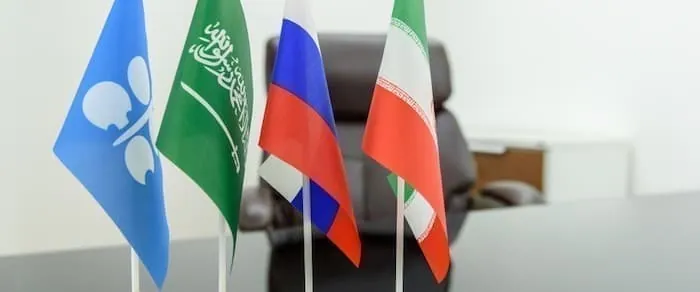
Saudi Arabia's New Oil Strategy Sends Shockwaves Through OPEC Markets
2024-10-01
Saudi Arabia's Strategic Shift
In a surprising twist, Saudi Arabia, OPEC's largest oil producer, has hinted at a significant change in its oil production strategy. Following recent shifts in oil prices, reports suggest that the kingdom is contemplating an acceleration of its plan to reduce production cuts. This move comes on the heels of a tumultuous month for the oil futures market. By mid-September, Brent crude oil futures underwent a drastic transformation, swinging from a state of significant backwardation to a flat market, creating uncertainty for traders and investors alike.
Bearish Market Sentiment
The oil market's sentiment remains overwhelmingly bearish; a recent Wall Street Journal article highlighted that the number of short positions on Brent futures has surpassed long positions for the first time ever. This shift reflects traders' anxiety over an influx of OPEC+ crude in the near future.
Saudi's Price Target Abandonment
Last week, as reported by the Financial Times, Saudi Arabia appeared ready to abandon its long-held unofficial price target of $100 per barrel as it prepares to boost output. This decision signals a willingness to accept a prolonged era of lower oil prices without the traditional safeguards Saudi Arabia has relied upon in the past.
Production Cuts and Market Conditions
Initially, plans to unwind existing production cuts among Saudi Arabia and seven other OPEC+ nations were set to commence at the beginning of October. Yet, delays and hesitations have led to a sharp decline in Brent prices, dipping below $70 per barrel due to fears surrounding weakening global demand and a sluggish Chinese economy. In a bold statement, the Kingdom declared its commitment to restore its production levels by December 1, no matter the market conditions or oil prices at that time, as it fights to maintain market share against non-OPEC producers, namely the United States.
Implications for OPEC Markets
The potential implications of Saudi Arabia's rumored strategy reverberate throughout the oil markets, given its significant role as a swing producer within OPEC. Currently, Saudi Arabia is responsible for 2 million barrels per day (mb/d) of the total 2.8 mb/d output cuts among OPEC members, significantly impacting supply dynamics.
OPEC's Stance on Price Targets
However, not everyone is convinced of the merits of these changes. OPEC itself has distanced from claims of new price targets, attempting to maintain a level of uncertainty and stability in the face of market volatility. Despite this, analysts at Standard Chartered have provided a more nuanced perspective. They view the increase in Saudi production as a tactical warning rather than a full-scale policy shift aimed at regaining lost market share.
Compliance Risks Among OPEC+ Members
As Saudi Arabia prepares for its January production boost, the stakes are high for all OPEC+ members to adhere to their commitments. Compliance will be critical as the market navigates potential oversupply and fluctuating prices in the months to come.
The Road Ahead for Overproducing Nations
In July, overproducing nations including Russia, Iraq, and Kazakhstan laid out plans to repay their excess output, indicating a cautious approach to recovery. According to OPEC, this compensation will span the next 15 months, seeking to stabilize the market. Yet, Standard Chartered contends that the expectation for smooth compliance may be overly optimistic, increasing the tension among member states.
Financial Pressures on Saudi Arabia
Saudi Arabia’s financial landscape also underscores the complexities of its strategy. The nation is grappling with a significant budget deficit, as current oil prices remain insufficient to meet its fiscal needs. For Saudi Arabia, a price of $96.20 per barrel is required to balance its budget, which has been strained by the ambitious Vision 2030.
Conclusion: A Market at a Crossroads
Despite these financial pressures, analysts suggest that Saudi Arabia retains the leverage to impose significant changes on the oil market. If required, they could scale back Vision 2030 initiatives, extend timelines, or explore alternative funding avenues to mitigate the consequences of low oil prices.
Ultimately, the oil market stands at a crossroads. Observers are closely monitoring Saudi Arabia's next steps, awaiting a critical decision that will shape the dynamics of global oil supply and prices. Will Saudi Arabia hold firm to its production adjustments, or will we witness a return to established norms of oil pricing? Only time will tell as the world watches closely.


 Brasil (PT)
Brasil (PT)
 Canada (EN)
Canada (EN)
 Chile (ES)
Chile (ES)
 España (ES)
España (ES)
 France (FR)
France (FR)
 Hong Kong (EN)
Hong Kong (EN)
 Italia (IT)
Italia (IT)
 日本 (JA)
日本 (JA)
 Magyarország (HU)
Magyarország (HU)
 Norge (NO)
Norge (NO)
 Polska (PL)
Polska (PL)
 Schweiz (DE)
Schweiz (DE)
 Singapore (EN)
Singapore (EN)
 Sverige (SV)
Sverige (SV)
 Suomi (FI)
Suomi (FI)
 Türkiye (TR)
Türkiye (TR)